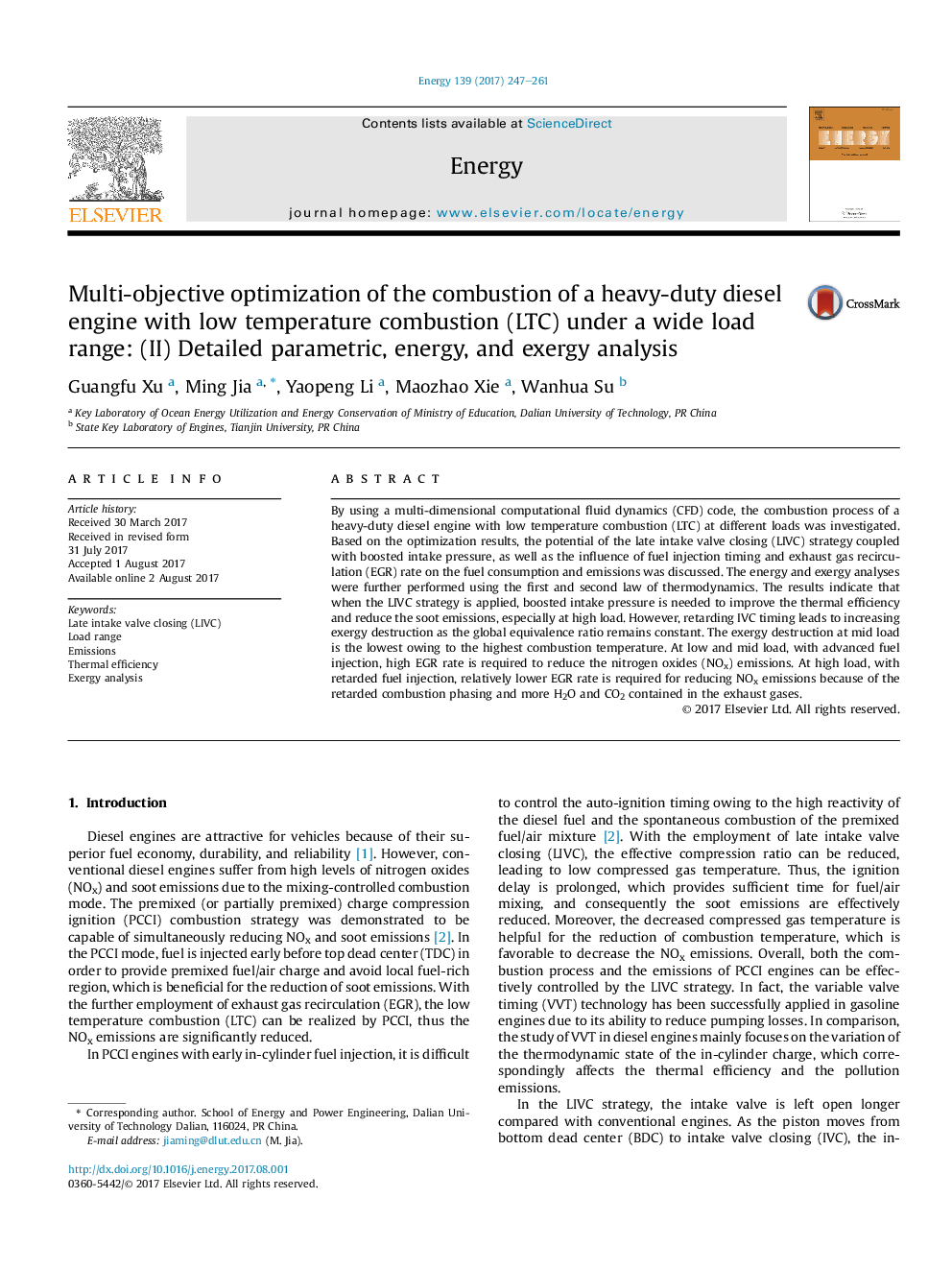| Article ID | Journal | Published Year | Pages | File Type |
|---|---|---|---|---|
| 5475602 | Energy | 2017 | 15 Pages |
Abstract
By using a multi-dimensional computational fluid dynamics (CFD) code, the combustion process of a heavy-duty diesel engine with low temperature combustion (LTC) at different loads was investigated. Based on the optimization results, the potential of the late intake valve closing (LIVC) strategy coupled with boosted intake pressure, as well as the influence of fuel injection timing and exhaust gas recirculation (EGR) rate on the fuel consumption and emissions was discussed. The energy and exergy analyses were further performed using the first and second law of thermodynamics. The results indicate that when the LIVC strategy is applied, boosted intake pressure is needed to improve the thermal efficiency and reduce the soot emissions, especially at high load. However, retarding IVC timing leads to increasing exergy destruction as the global equivalence ratio remains constant. The exergy destruction at mid load is the lowest owing to the highest combustion temperature. At low and mid load, with advanced fuel injection, high EGR rate is required to reduce the nitrogen oxides (NOx) emissions. At high load, with retarded fuel injection, relatively lower EGR rate is required for reducing NOx emissions because of the retarded combustion phasing and more H2O and CO2 contained in the exhaust gases.
Related Topics
Physical Sciences and Engineering
Energy
Energy (General)
Authors
Guangfu Xu, Ming Jia, Yaopeng Li, Maozhao Xie, Wanhua Su,
